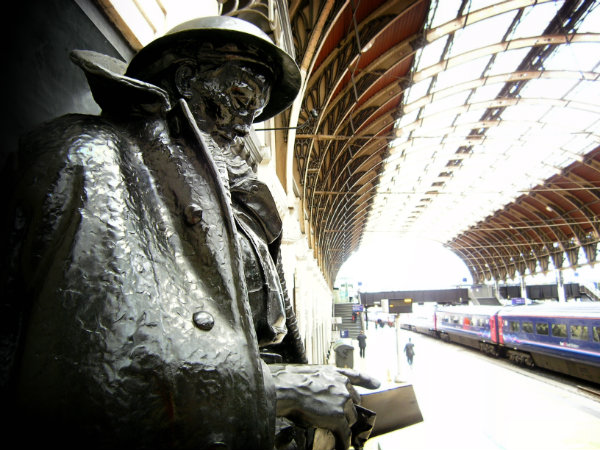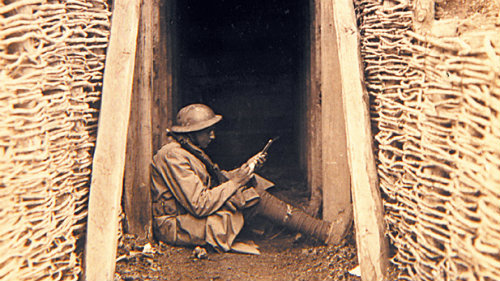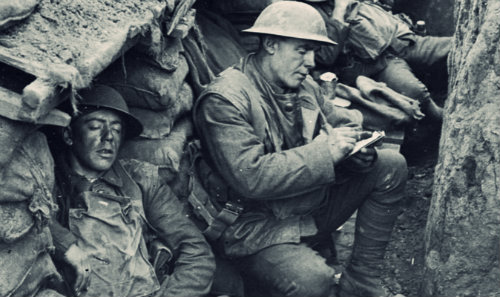A British centenary undertaking, Letter to an Unknown Soldier, which invites the public to write letters to the Great War’s “unknown soldier” is giving people a glimpse of the horrors servicemen during WWI had to go through and endure.
A century ago, countless of soldiers coming from various parts of the world celebrated Christmas while huddled in the trenches of the Great War’s front lines. Aside from dealing with homesickness the holiday season might have brought upon them since they were miles away from their families, they also had to face off their enemies and the thought of dying anytime while fighting in the battlefields. For most of these soldiers, the mails they get from home assuaged their fears of the unknown and death.
The Great War started summer of 1914. But what everyone thought as a short skirmish dragged on until Christmas of that year and eventually, for four years on.
The outbreak of WWI, dubbed prematurely as the “war to end all wars”, reached its 100th anniversary in 2014 and the world marked that milestone with a series of commemorations. Some of these observances were highly publicized — ceremonies attended by the members of the British royal family as well as other VIPs and of course, the sea of red poppies installation at the Tower of London moat in honor of each British and Commonwealth soldier who passed away during the war.
But there are also commemorations which are lesser known, one of which is the Letter to an Unknown Soldier project. This said venture invites the public to write letters to an oftentimes unnoticed statue standing at the Paddington Station in London — the memorial of an unknown soldier reading a letter.
The project tasks those who wish to enter to pen down a message to a soldier who served during the Great War. In just over a month after the Letter to an Unknown Soldier was launched, the project received more than 21,000 letters.
Aside from allowing the public to voice out their feelings and thoughts about WWI to those who served in it, the undertaking also gave the people a glimpse of the horrors of the war the soldiers had to face as well as tremendous amount of letters delivered to the front lines and the trenches during the four-year conflict.
According to statistics, an average of 12.5 million letters crossed the English Channel into the hands of waiting WWI soldiers in the Western Front every week during the height of the Great War.
Britain’s Postal Museum and Archive’s Head of Collections, Chris Taft, stated that the letters were very vital in boosting the morale of WWI servicemen. It was essential to bring post to the troops as they were their only means of contact to their families and loved ones back home.
Mail Delivery to the Front
Nevertheless, delivering each WWI soldier’s letter wasn’t a simple operation.
Firstly, the letters needed to be sorted out at the Home Depot, a huge sorting place which covered five acres of central London’s Regent’s Park. That meant each letter sent to a soldier was delivered here first.
The sorters, who were mainly women, received daily updates about the movements of the troops to make sure that the letters reach their intended owners.
After being classified, the letters were, then, sent off to army depots located on France’s northern coast. In there, the mails were loaded to supply trains which would, then, take them to the staging posts which were close to their intended destinations. The delivery to these posts would take place under the cover of darkness. Finally, each soldier in the trench would receive his mail along with his evening meal.
Letters Gave Life to the Troops
Exceptionally, letters from UK usually were delivered to their respective recipients within two to three days from being posted. On the other hand, letters coming from overseas like Canada took longer time to get posted as they had to reach England first.
But no matter, many servicemen and women in the front lines of the Great War admitted to having their spirits buoyed up with the letters they received from home.
As one Canadian nurse serving during WWI by the name of Patricia Tuckett wrote in her letter while she was stationed in the Mediterranean in 1915, “letters are my only thing to live for now”.
Another Canadian soldier, Hart Leech, about how soldiers were torn from writing postmortem letters to their families before they engaged into battle. He wrote how, in a way, the dilemma was funny as the soldiers were half-ashamed of writing their farewell letters and posting it to their families back home. As one officer from his unit said, if they came out of the battle alive, the letter would appear as a joke but if they would not post these messages, then, by chance they died in battle, the sorry feeling that the postmortem mails were not sent would be there pestering.
Leech died shortly after writing the above-mentioned thoughts in a letter. However, it took twelve years for his last letter to get to the hands of his mother as it got lost with his belongings shortly after his death.
A Glimpse of the Horrors of War
According to a professor in the Vancouver Island University, Dr Stephen Davies, who has been cataloging Canadian WWI letters for the past decade, the vitality of letters to soldiers in the front lines of the Great War was a prevalent theme among thousands of mails he had read. He further added that their importance lie in these two reasons — they were the soldiers’ bridge to their past lives as well as to their future aspirations.
And today, these letters give us a glimpse of the horrors the soldiers had to face during the First World War. One such traumatic experience expressed in paper was of British soldier Arthur Hubbard who was ordered to kill three wounded German soldiers. He had described them as “bleeding badly and begging him to take them off from their misery”. He added that “his head jump” every time his mind was assaulted by the thoughts of these men.
Hubbard eventually committed suicide after suffering from post-traumatic stress disorder which was dubbed shell shock in those times.
As Davies put it, the letters from WWI are today’s world’s windows to truly understand the human cost of war. These soldiers had hopes, dreams, ambitions and felt love but all these, throughout the conflict, were lost with them.


